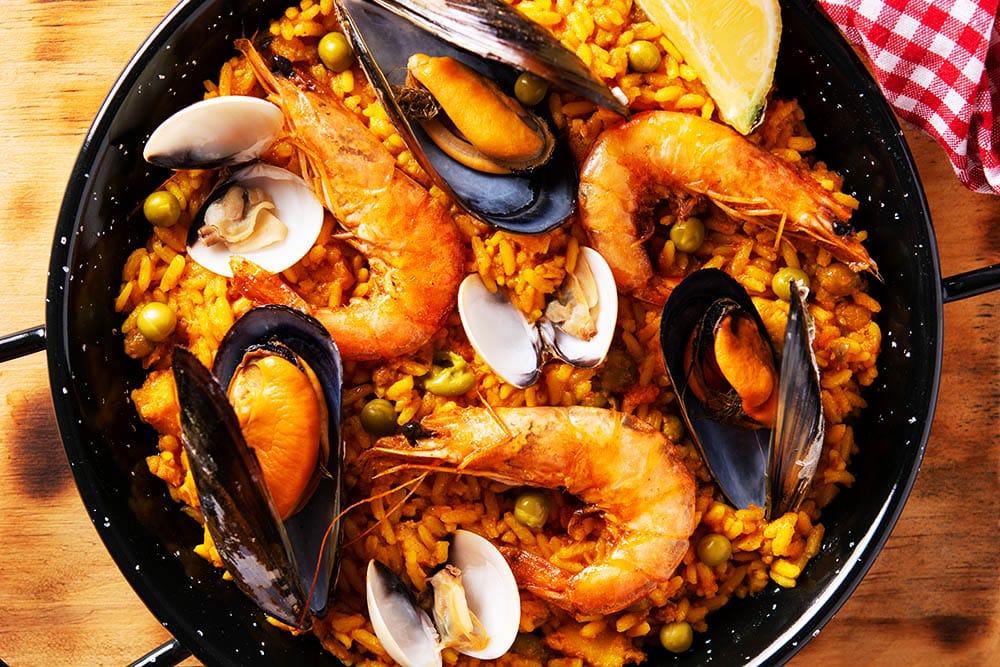Spain is a country that has been enticing travelers for centuries with its rich history, culture, and of course, its delicious cuisine. Sampling the local dishes is often a highlight of any vacation, and Spain is certainly no exception. With its vibrant and colorful cuisine, Spanish food is sure to tantalize your taste buds and leave you wanting more. In this article, we will explore the mouthwatering traditions and flavors of Spanish cuisine, and why it is a culinary journey worth taking.
The Roots of Spanish Cuisine
The cuisine of Spain is as diverse and varied as the regions that make up the country. The roots of Spanish cuisine can be traced back to various historical influences, including the Moors, who occupied much of the Iberian Peninsula between the 8th and 15th centuries. The Moorish influence can be seen in many of the dishes that are still popular today, such as paella, a rice dish that originated in Valencia and is flavored with saffron, paprika, and other spices.
Another influence on Spanish cuisine was the discovery of the New World in the 15th century, which led to the introduction of new ingredients such as tomatoes, peppers, potatoes, and, of course, chocolate. These ingredients became integral to many Spanish dishes and helped to create the modern cuisine we know today.
Spanish Dishes You Need to Try
If you are planning a trip to Spain, then you must sample some of the delicious dishes that are on offer. Here are some of our top picks:
Pulpo a la Gallega: This dish, also known as Galician-style octopus, is a popular and traditional dish from the Galician region. The octopus is boiled, sliced, and then served with olive oil, paprika, and salt.
Tortilla Española: This classic Spanish dish is essentially a potato and onion omelet. The eggs are cooked with a layer of potatoes and onions and then flipped over to cook the other side.
Gazpacho: This refreshing soup is perfect for hot summer days. It is made with tomatoes, peppers, onions, garlic, bread, and olive oil, and is served cold.
Churros con Chocolate: This dessert is a must-try when in Spain. Churros are long, thin pieces of dough that are deep-fried until they are crispy on the outside and soft on the inside. They are then served with a thick hot chocolate sauce for dipping.
These are just a few of the many delicious Spanish dishes that you can try while in Spain. The best way to discover new dishes is to venture out and try the local specialties of each region.
The Importance of Ingredients in Spanish Cuisine
One of the most important aspects of Spanish cuisine is the ingredients used. The country has a rich agricultural tradition, with many regions specializing in the cultivation of certain ingredients. For example, the region of La Mancha is famous for its saffron, while the Basque country is known for its seafood.
The use of fresh, high-quality ingredients is crucial in Spanish cuisine, as it enhances the natural flavors of the dish and provides an overall better eating experience. Many Spanish dishes are simple, with just a few carefully selected ingredients that work together to create a delicious and satisfying meal.
Regional Cuisine in Spain
Spain is divided into 17 regions, each with its own unique cuisine. Here are some of the top culinary regions in Spain:
Andalusia
Andalusia is located in the south of Spain and is home to some of the country’s most famous dishes. The region is known for its hearty stews, such as the oxtail stew known as rabo de toro. It is also famous for its cold soups, such as gazpacho and salmorejo, which are perfect for hot summer days.
Catalonia
Catalonia, located in the northeast of Spain, is known for its seafood dishes and hearty meat stews. One of the most famous dishes from the region is suquet de peix, a fish stew that is flavored with tomatoes, garlic, and saffron.
Basque Country
The Basque country, located in the north of Spain, is a culinary paradise with a focus on fresh seafood and grilled meats. The region is famous for its pintxos, which are small bite-sized dishes that are often served on bread.
Tips for Sampling Spanish Cuisine
When it comes to sampling Spanish cuisine, there are a few tips to keep in mind to ensure that you have the best possible experience:
Try the local specialties: Each region of Spain has its own unique cuisine, so be sure to try the local specialties of each area.
Order tapas: Tapas are small plates of food that are meant to be shared, making them perfect for sampling a variety of dishes in one meal.
Visit local markets: Local markets are a great place to sample fresh produce and regional specialties, and to get a feel for the local culture.
In Conclusion
Spain is a country with a rich culinary tradition that is sure to please even the most discerning palate. Whether you are a foodie or just someone looking for a memorable culinary experience, sampling the local cuisine is a must when visiting Spain. From the hearty stews of Andalusia to the fresh seafood of the Basque country, there is something for everyone in the diverse and flavorful cuisine of Spain. So pack your bags and embark on a culinary journey that is sure to be both satisfying and delicious.
- Why Venture Capital is Essential for Startups: The Key to Unlocking Success - 28 de mayo de 2023
- Revolutionize Your Business with E-commerce: The Ultimate Guide to Success - 28 de mayo de 2023
- Why Patents are Crucial for Protecting Innovation and Driving Economic Growth - 28 de mayo de 2023
